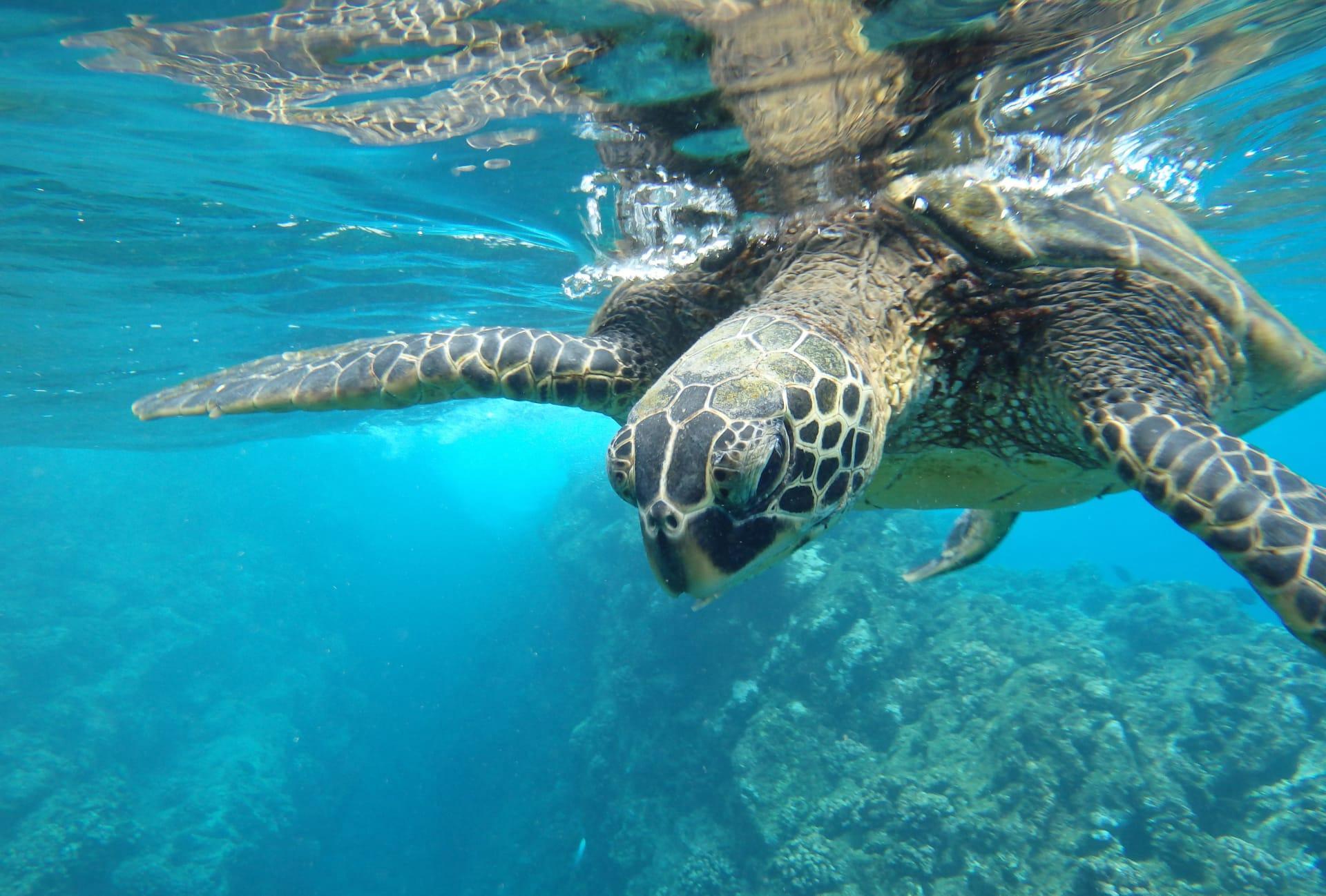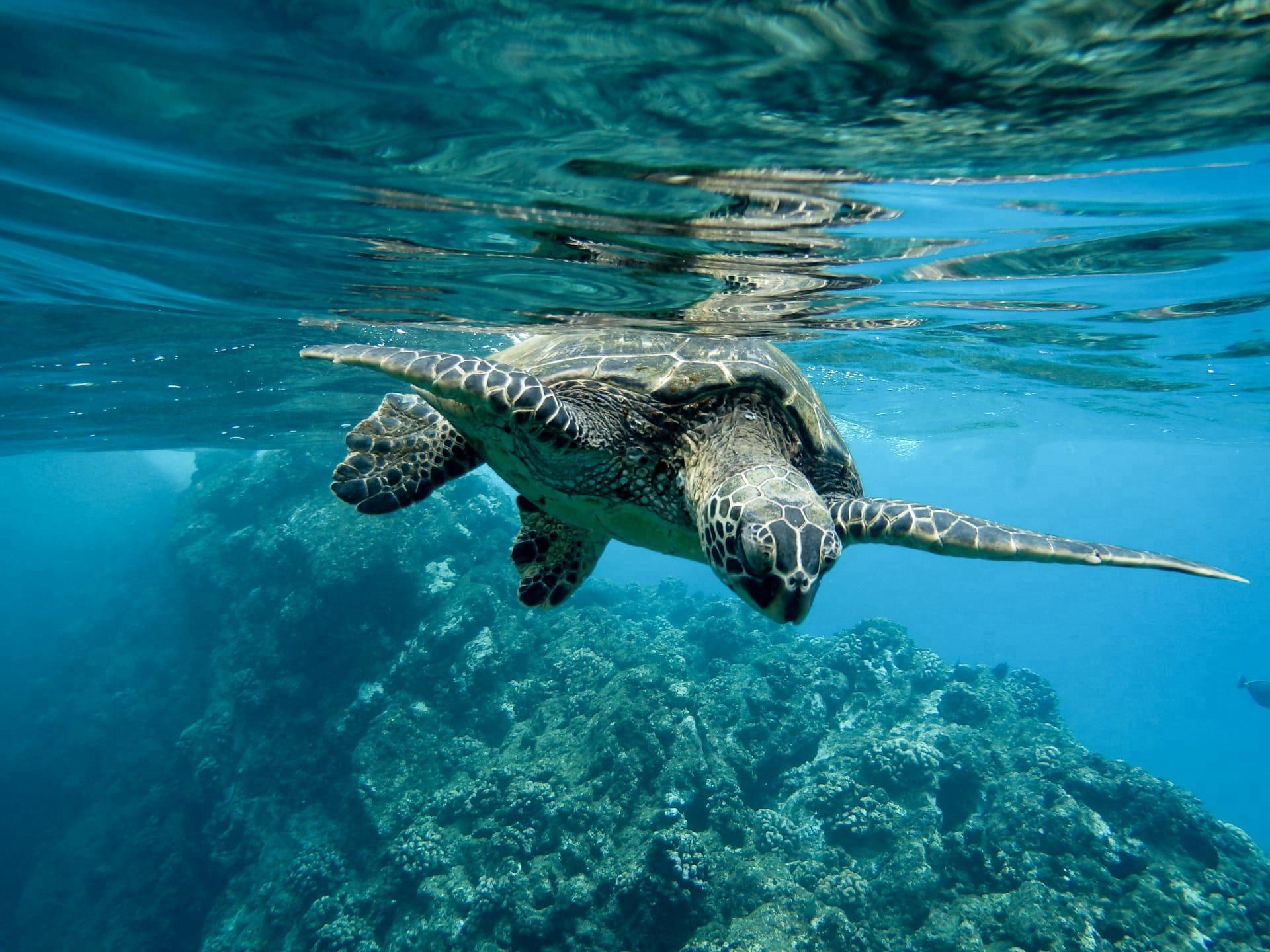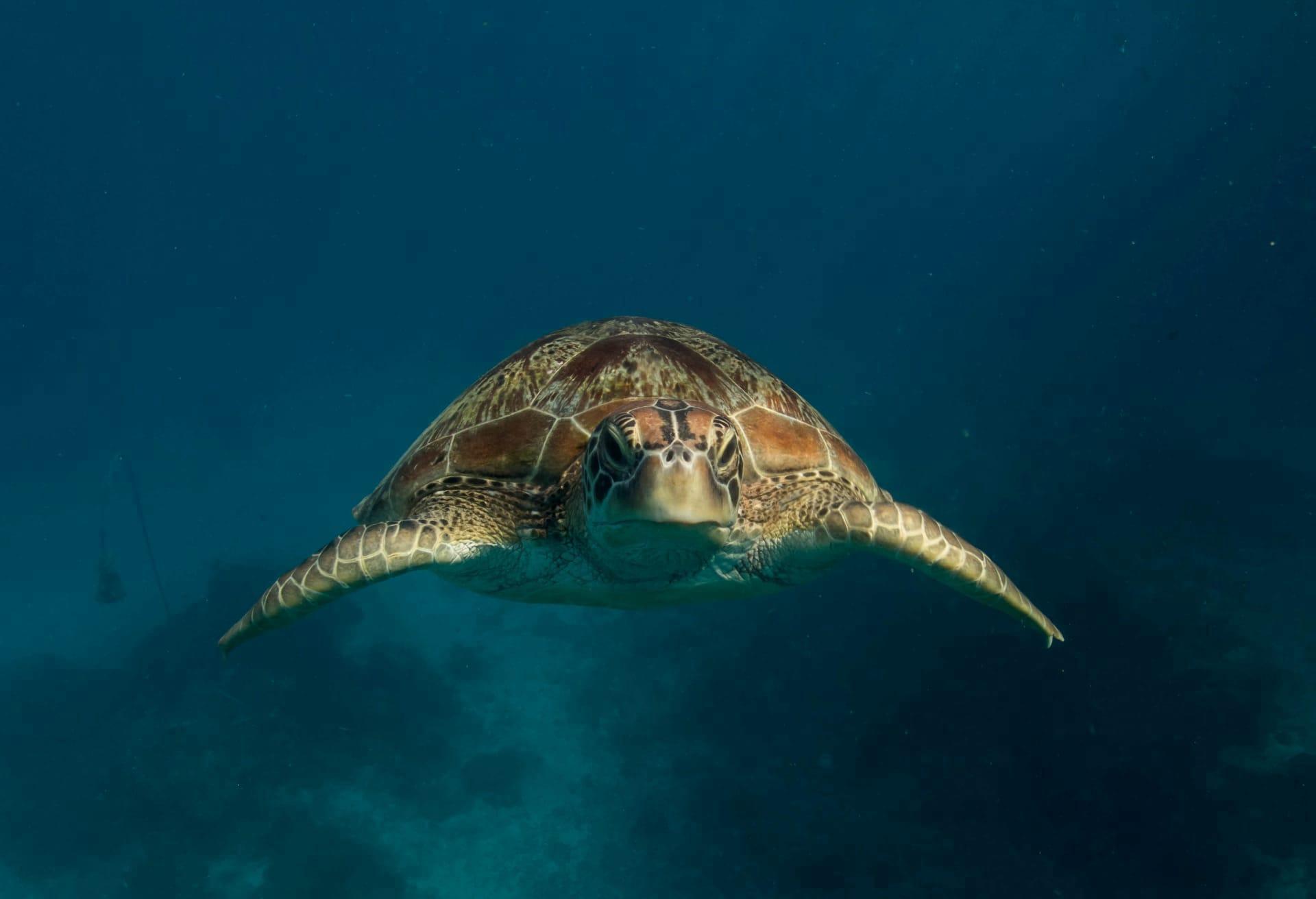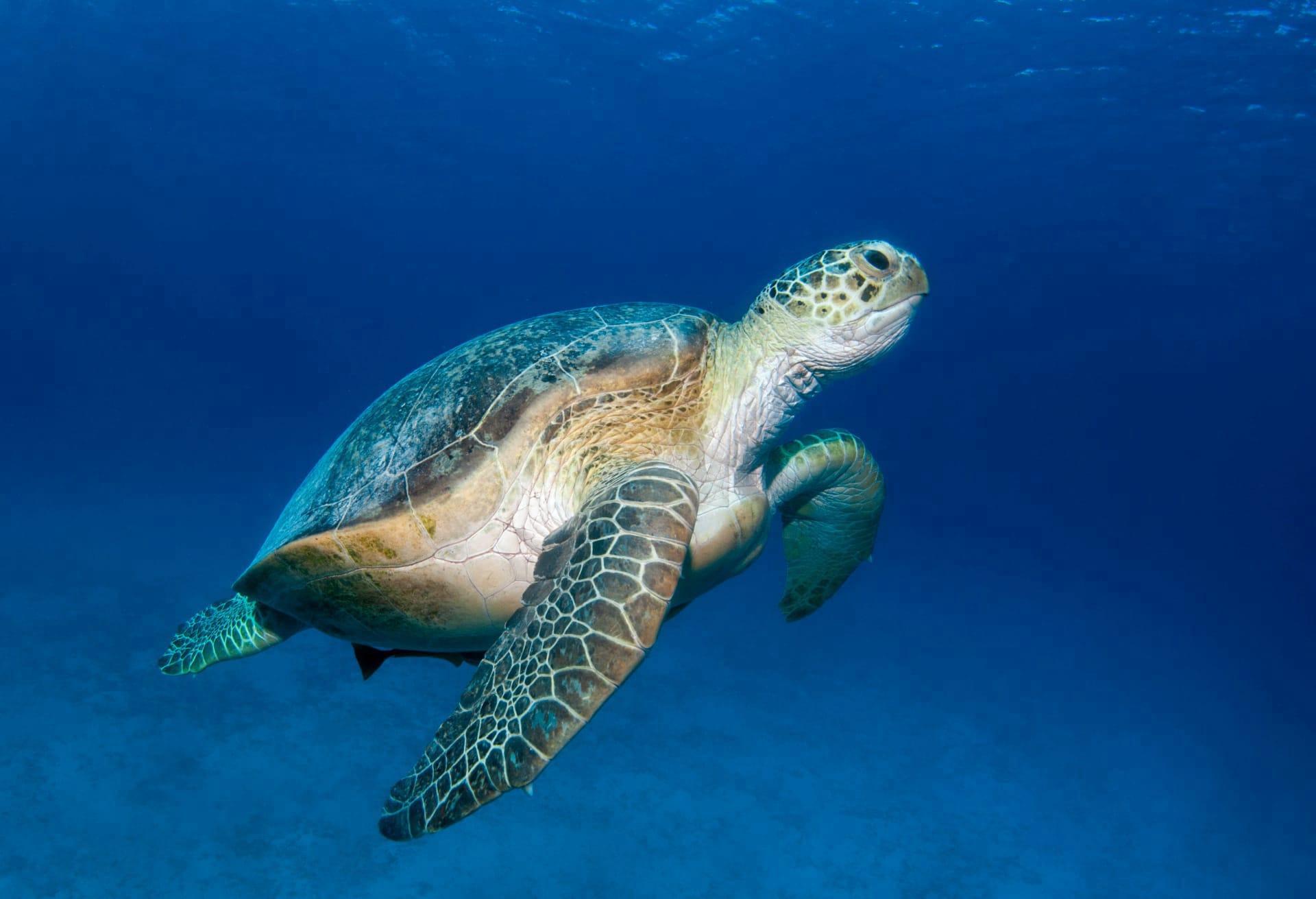1
Green sea turtles, scientifically known as Chelonia mydas, are not just your average marine reptiles. These graceful swimmers boast a unique heart-shaped shell, or carapace, that can grow up to 5 feet in length. That's about as long as an average sofa! Interestingly, their shell is not green, but rather a mixture of different shades like brown, olive, and black. The name "green" comes from the color of the fat under their shell, which is green due to their herbivorous diet consisting mainly of seagrasses and algae. This diet also contributes to their hefty weight, with adults tipping the scales at an impressive 150 to 400 kilograms (330 to 880 pounds). That's about the weight of a grand piano!
Another fascinating aspect of these marine creatures is their incredible journey across oceans. Green sea turtles are known for their long-distance migrations, traveling thousands of kilometers between feeding grounds and nesting sites. One documented case recorded a turtle traveling over 2,600 kilometers (1,615 miles) from its nesting site in Indonesia to its feeding grounds in Australia. That's further than the distance from New York to Los Angeles! This extraordinary navigation skill is still a bit of a mystery to scientists, but it's believed that they use the Earth's magnetic field, along with water currents and temperature, to find their way across the vast oceanic expanse.

2
Did you know that green sea turtles can hold their breath for hours? While resting or sleeping underwater, these turtles can stay submerged for up to 5 hours without coming up for air. Their heart rate slows down significantly, to just one beat every 9 minutes, allowing them to conserve oxygen. This adaptation is crucial for their survival in the marine environment, enabling them to hide from predators or simply take a peaceful nap under the sea. It's a stark contrast to their behavior when they are active, during which they need to surface every few minutes to breathe.
Another intriguing fact about green sea turtles is their temperature-dependent sex determination. The temperature of the sand where the eggs are incubated determines the gender of the hatchlings. Warmer sand temperatures, generally above 30 degrees Celsius (86 degrees Fahrenheit), tend to produce female turtles, while cooler sand results in male hatchlings. This unique characteristic has significant implications for the species, especially in the context of climate change. As global temperatures rise, there's a risk that more females will be produced, potentially leading to a gender imbalance in the population. This is a critical factor that conservationists keep an eye on to ensure the sustainability of these majestic sea creatures.

3
Green sea turtles have a remarkable life span, with some individuals living up to 80 years or more. This longevity is quite impressive, especially when you consider the challenges they face throughout their lives, including predators, habitat destruction, and human interference. Their long life cycle also means that they reach sexual maturity quite late, typically between 20 to 50 years of age. This delayed maturity is one of the reasons why conservation efforts are so crucial. It takes a long time for these turtles to start contributing to the population, and any disruption during their growth can have long-term effects on their numbers.
When it comes to nesting, green sea turtles show incredible fidelity to their birthplace. Known as natal homing, female turtles will travel great distances to return to the exact beach where they were born to lay their eggs. This remarkable journey can sometimes be over thousands of kilometers. Scientists believe that they use a combination of magnetic cues, the smell of the beach's water, and even the Earth's geomagnetic field to locate their birthplace with astonishing accuracy. This deep-rooted instinct ensures that they contribute to the next generation in the same safe environment where they started their own lives.

4
Green sea turtles play a vital role in their ecosystem, particularly in maintaining the health of seagrass beds and coral reefs. By feeding on seagrasses, they prevent these plants from becoming too long and overgrown, which can hinder the growth of the seagrass and the overall health of the bed. Healthy seagrass beds are crucial as they provide habitat and nursery grounds for many marine species. Similarly, when feeding in coral reefs, green sea turtles help in controlling sponge populations. This is important because excessive sponge growth can compete with corals for space, threatening the diversity and health of the reef ecosystem. Thus, the feeding habits of green sea turtles contribute significantly to the balance and sustainability of their marine habitats.
Interestingly, green sea turtles have a symbiotic relationship with some marine creatures. For example, they often have small cleaner fish and even shrimps that feed on parasites and dead skin from their shells and skin. This cleaning ritual is beneficial for both parties: the turtles get a spa-like treatment, ridding their bodies of unwanted hitchhikers, while the cleaner fish and shrimps get a nutritious meal. These interactions highlight the interconnectedness of marine life and the importance of each species in maintaining the health of the ocean's ecosystems.

5
Green sea turtles have a unique adaptation in their eyes that helps them survive in the salty marine environment. They possess special glands near their eyes that help to remove excess salt from their bodies. These glands work so efficiently that they often create the illusion that the turtles are crying. In reality, these 'tears' are a way to maintain a healthy balance of salt and water in their bodies. This adaptation is especially crucial since their diet primarily consists of salty sea grasses and algae.
Lastly, the hatching process of green sea turtles is a remarkable and delicate event. After a gestation period of about two months, the hatchlings emerge from their eggs, usually at night. This nocturnal timing is a survival strategy, as it reduces exposure to daytime predators and extreme temperatures. The hatchlings use the natural light of the horizon and the white crests of the waves to navigate their way to the ocean. This instinctive journey is fraught with challenges, as they must evade predators and overcome obstacles to reach the relative safety of the sea. This early test of survival plays a critical role in the natural selection process, ensuring that only the strongest and most adaptable turtles reach adulthood and contribute to the future of their species.